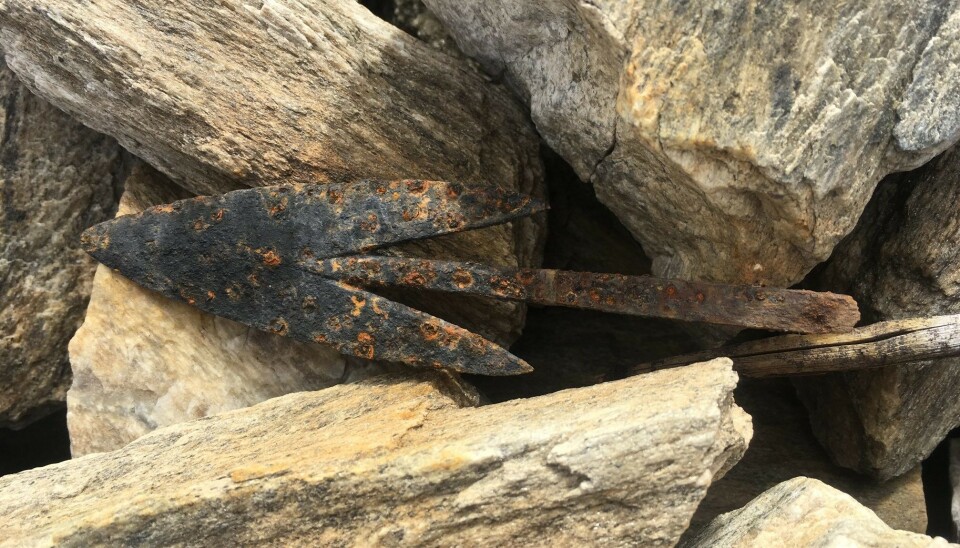
Ancient remains from reindeer hunting and a forgotten trail in the Norwegian mountains found by glacial archaeologists
Melting ice has laid bare arrowheads, traces from reindeer hunting and a mountain trail in one of the many sites that the Secrets of the Ice-team continuously monitor for finds.
If you want to kill a reindeer with a bow and arrow you have to get as close to the animal as you possibly can. You probably can’t be further away than 10-20 metres. Which is difficult, with an animal that will flee at the smallest sound or movement.
The mountains and ice patches in Sandgrovskaret didn’t provide hiding places for the hunters, so they had to construct some.
40 such so-called hunting blinds – a rock wall shaped as a half circle that hunters would hide behind – were found when glacial archaeologists visited the site four years ago.
“This was a big hunting location”, archaeologist Espen Finstad says to sciencenorway.no.

Hunted in the mountains and lived in the valley
The mountain in question is 1800-1900 metres above sea level, so the hunters wouldn’t have been living here.
“Most likely they lived down in the valleys, but clearly had large hunting stations higher up in the mountains”, Finstad says.
People have hunted here for thousands of years.
“In the Stone Age, they would have lived in simple settlements, and during the Iron Age they would have had grand long houses down in the valley”, Finstad says.
Some such settlements were discovered by the glacial archaeologists about a year ago, dating back to the Viking Age and Early Medieval period.
- READ MORE ABOUT: The amazing discovery of a lost Viking settlement
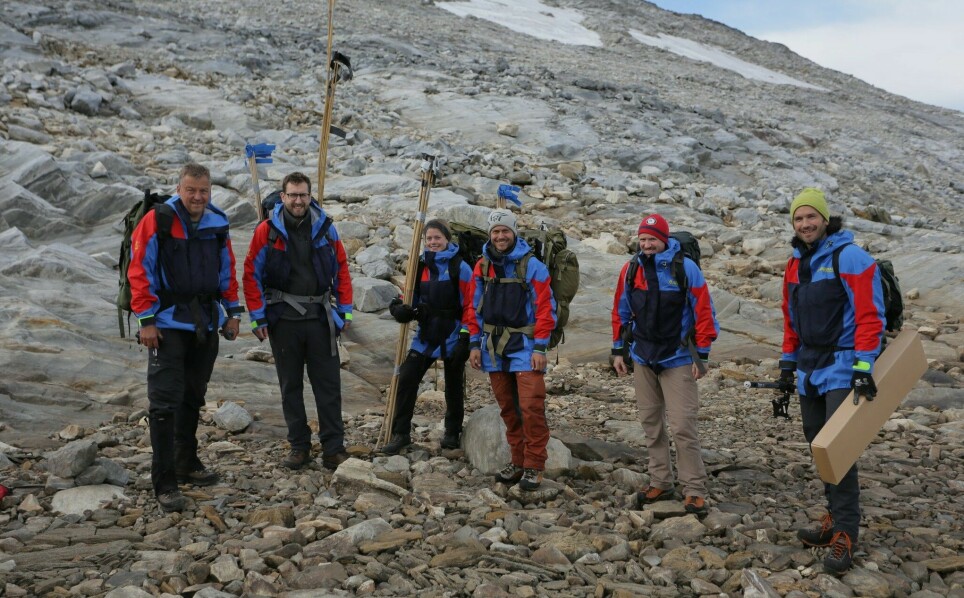
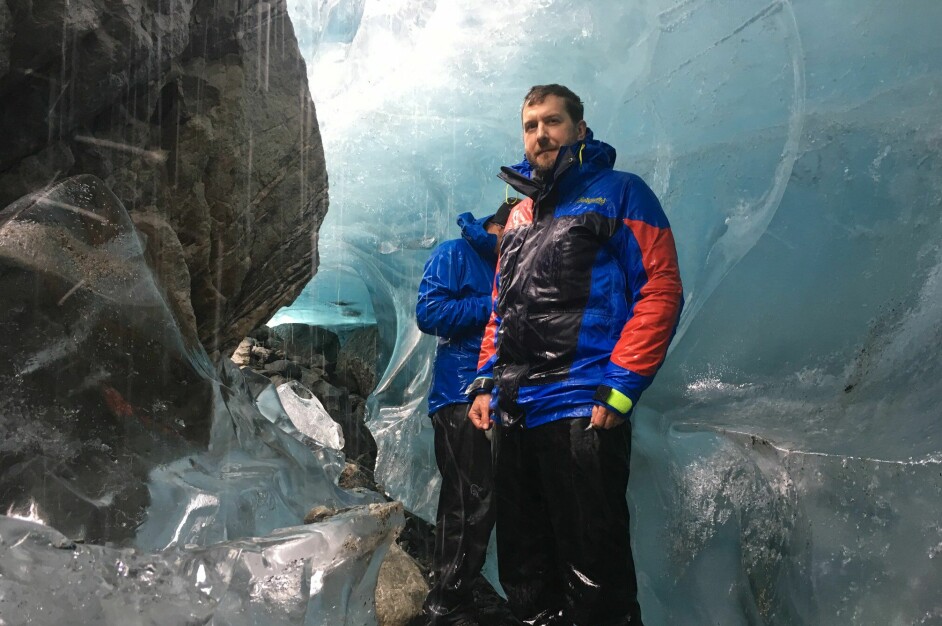
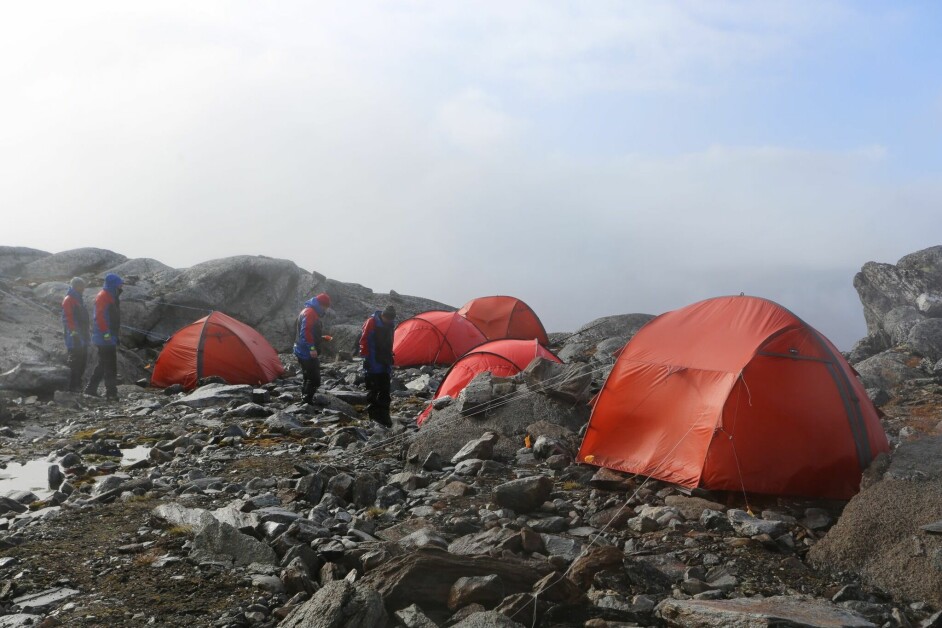
Manipulating reindeer with sticks
The archaeologists also found 32 so-called scaring sticks at Sandgrovskaret, which were used in the reindeer hunt.
“Some of these were lying in a line, indicating where a type of psychological fence for reindeer once stood”, Secrets of the Ice write in a post on their Facebook-page.
Scaring sticks are the most common finds from the melting ice in Innlandet. Some sites have hundreds, others just a few. In total more than 1000 such sticks have been recovered.
And they were used, as the name suggests, to scare the animals into position.
The sticks are usually about one metre long, with a movable object attached to the top, like a thin wooden flag that would flap in the wind.
“You would bring a bunch of these sticks to the mountains, and depending on weather and wind and where the reindeer are found, you would calculate how best to make them move toward the hunting blinds, and place lines of these sticks along the ice”, Finstad explains.
The movement from the sticks would make the reindeer worried and move in the opposite direction.
“It was a way of manipulating the animals to walk in the direction where you were waiting for them with your bow and arrow”, Finstad says.
Bones and arrows
Five arrows were found, a nice little collection, Finstad says.
Three of them have preserved iron arrowheads. One of them is of a rare type, and it's the first find of this type of arrowhead at the ice. It is previously known only from a single grave find in the county, which dates to around AD 550-600. The other two arrowheads are well known from Iron Age burials.
The other two arrows were very long – up to 1 metre – but did not have arrowheads. These are from earlier periods, likely 800 BC based on the shape.
Bones and antlers from reindeer were collected but have yet to be dated using DNA analysis.
At another site, which was kept secret for some time, the glacial archaeologists once found a total of 68 arrows dating from the Stone Age to the Medieval Period. It was a prehistoric arrow bonanza, according to the Secrets of the Ice blog.
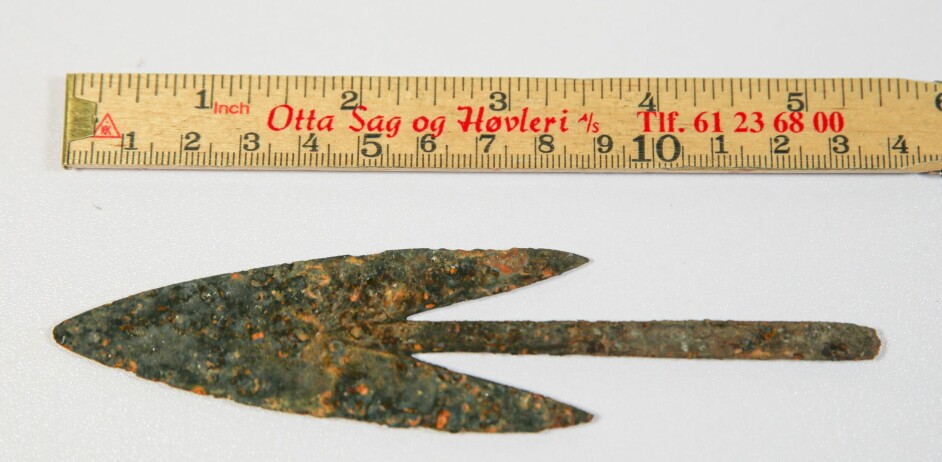
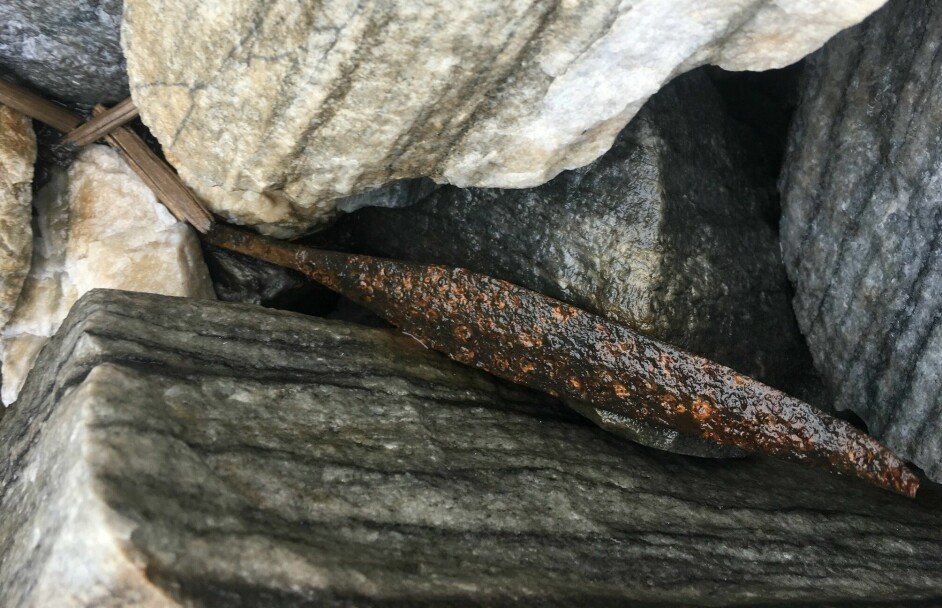
- READ MORE: People have lost arrows and other objects at this spot in Jotunheimen — for more than 6000 years
Perfect conditions, in 65 sites
The first traces of finds at Sandgrovskaret were seen in 2013.
“We were there just to explore the conditions and could see some materials that had been uncovered from melted ice. Over the years we returned sporadically and saw more items”, Finstad says.
A larger mission was then planned for 2018. The archaeologists spent a week in the challenging environment, surveying the site systematically, documenting the hunting blinds, and rescuing as many finds as they could. The report from this mission was just published.
But the ice may have melted more since. At Sandgrovskaret, and other locations. Glaciers are sensitive to climate change, and a recent mapping showed that Norway's glaciers in total have shrunk about 14 per cent over the past six years. Many smaller ice patches have nearly disappeared.
The Secrets of the Ice project has a total of 65 sites in Innlandet county where there are finds, spread out over Jotunheimen, Dovrefjell and Breheimen.
“These are great distances”, Finstad says.
“We have a window of opportunity from August and until the snow falls, where more items might surface and we can go rescue them. So every year we have to plan and prioritize”, he says.
There have been finds from melted glaciers in other parts of Norway, but no other project can boast as many as Secrets of the Ice – spanning from the Stone Age and up until the Plague in the 1300s.
“These are the highest mountains in Norway with several thousand years old ice, be they glaciers or ice patches. There have been plenty of reindeer here throughout the centuries, and short distances between the mountains and valleys where people have lived. So both the conditions for preservation as well as the cultural history setting in this area means that there has been a lot of activity here, and that things have been left behind and preserved”, Finstad explains.
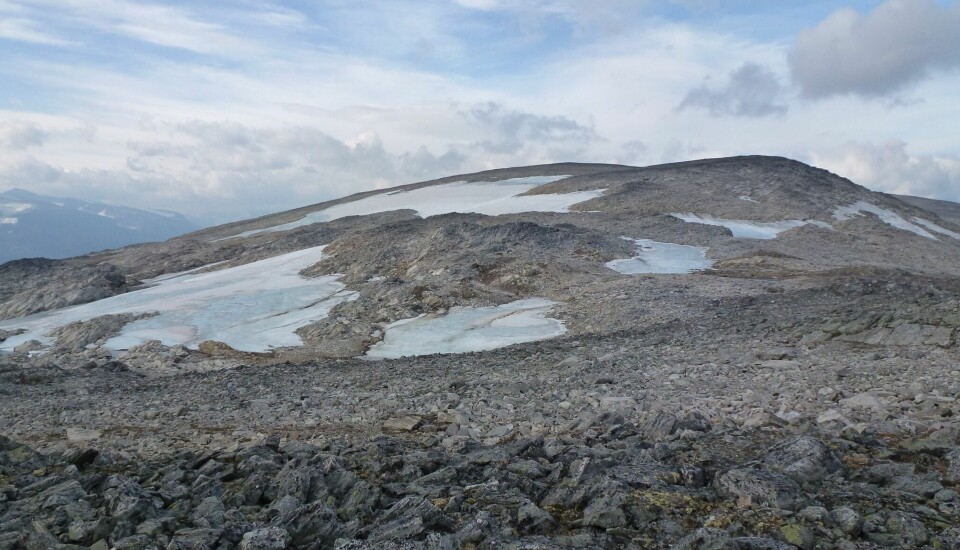
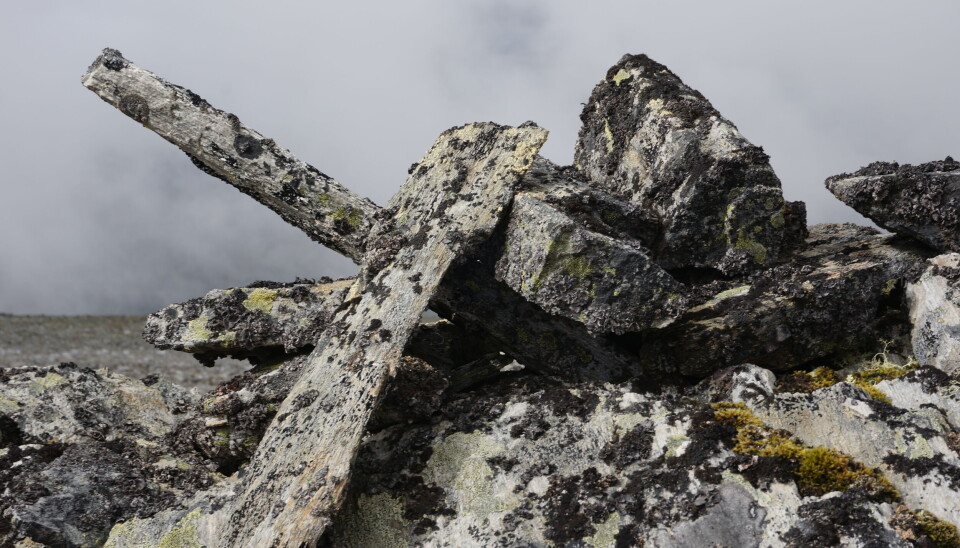
Forgotten mountain trails
The surveys at Sandgrovskaret site also revealed an ancient mountain trail. According to local history, this was used all the way up to the 19th century. What the archaeologists don’t know, is how far back the use of the mountain trail goes. The trail is marked by a number of so-called cairns, little man-made piles of stone used to mark the path.
“It’s impossible to say based on these cairns how old the trail is”, Finstad says.
At another site however, Lendbreen in Jotunheimen, the melting ice revealed a forgotten mountain pass, as well as a number of artefacts dated back to the Iron Age. Here the archaeologists know that the pass was since forgotten and not in use.
In total, the archaeologists have discovered approximately 800 artefacts left behind by people who were there centuries ago, sciencenorway.no wrote about this pass.
Remains of sleds, dead animals, clothing and household items melted out of the ice in the pass.
Many of the artefacts found, including a knife and a mitten dated to the Viking Age, are very well preserved. Radiocarbon dates of the finds in fact confirmed that the trail was most intensely used around 1000 years ago, during the Viking Age.
“The lost mountain pass at Lendbreen is the greatest discovery of the Secrets of the Ice program”, according to archaeologist Lars Pilø.
- READ MORE ABOUT THIS: Activity over this mountain pass was at its peak during the Viking Age.
































